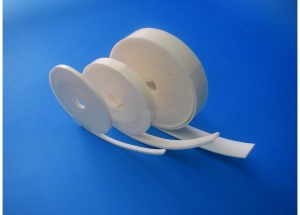The installation of a new or restoration of an old floor covering is considered to be the most important stage of repair work, since the visual perception of sex determines the success of the chosen design line and stylistic direction of the room.
An inalienable stage of creating a floor covering is considered to be the implementation of tie-up work, which can be done by two methods: using a traditional wet screed and an innovative dry screed technology. What is a dry screed and how to make it with your own hands, we will tell you in detail in the article.
Content
What is a dry floor screed?
The technology of creating a dry concrete screed is impossible to impossible: concrete slabs are covered with a polyethylene film that creates thermal insulation, a layer of expanded clay is applied over the top, the main purpose of which is leveling the floor. On top sheeted material of increased strength, for example, Knauf. So it looks like a dry screed, which becomes the basis for finishing the floor.
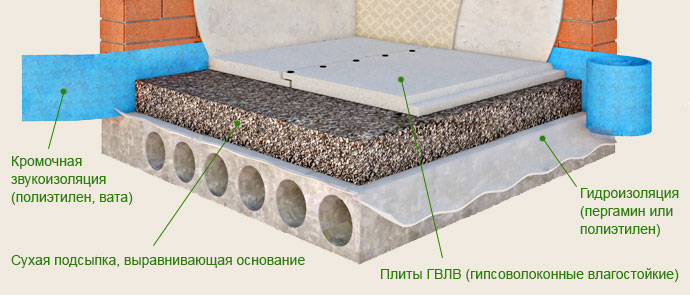
The dry screed is successfully used on reinforced concrete floors and in the presence of beams on a wooden floor.
Advantages of dry floor screed
In –first, completely eliminates the need for labor-intensive and dirty work with cement or concrete mortar. And this means that a dry screed can be done by yourself without the involvement of expensive specialists.
In –secondly, low pour point of the cement slurry. If the concrete screed should be performed immediately in the entire room, then the dry produce small areas, correcting periodically the result.
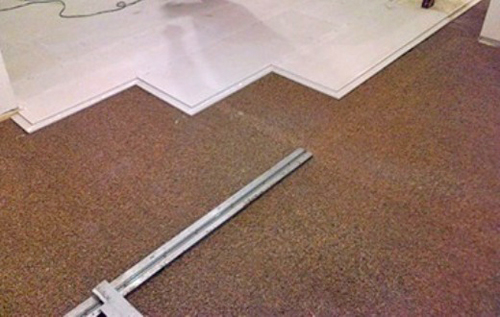
Thirdly, dry screed, thanks to the use of expanded clay, is characterized by a high level of thermal insulation. Additional noise insulation of the structure is attached to the edge band made of foamed polyethylene.
AT –fourth, Dry screed is most suitable for laying the necessary communication lines.
Fifthly, this type of screeding is indispensable if the repair must be done in a short time or in a cold period, when the concrete solution does not solidify for a long time. To harden a concrete screed, you have to wait a month and only after that you can lay the floor covering.
And, finally, in the presence of wooden floors, the best option is a dry screed, since the base of wood will not withstand concrete.
Necessary materials
To create a quality dry screed you will need the following materials and tools:
- metal profiles for beacon equipment;
- polyethylene film, which provides the proper level of moisture and sound insulation;
- edge band;
- expanded clay;
- gypsum fiber sheets resistant to moisture;
- self-tapping screws and fasteners;
- glue for construction.
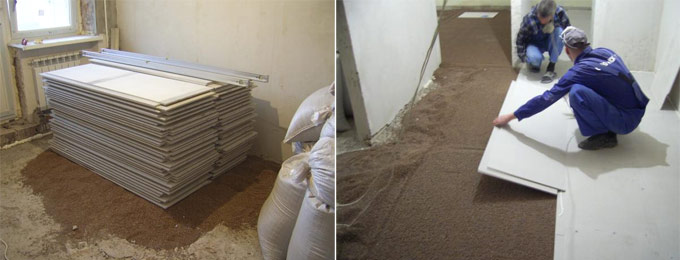
How to make a dry floor screed with your own hands
The technology of performing a dry floor screed with your own hands consists of the following works:
Preliminary work
The construction of the floor should be started only after the completion of the entire complex of plumbing and electrical work, a thorough check of heating and sewage systems.
In the presence of an old coating, it is dismantled and work is done to level the surface. Discovered holes and voids embedded cement mortar, and the projections are eliminated by the Bulgarian and thoroughly polished. The construction vacuum cleaner removes all debris and marks the height of the dry screed on the walls.
Moisture-proof layer
The moisture-proof material is applied to the prepared substrate - polyethylene film or glassine. Laying of individual strips of material is made lapped (15-20 cm). At the surface of the walls, the film must reach the designated height of the screed - at least 6 cm.
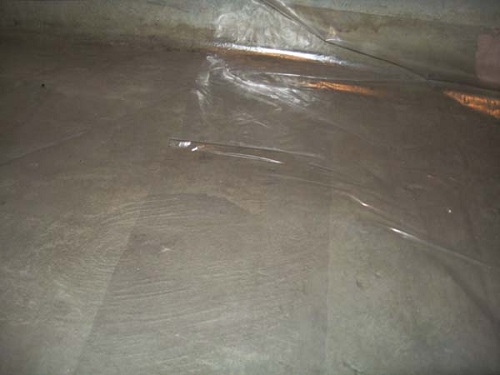
Do not neglect the moisture barrier, since any, even a small amount of moisture can trigger swelling of the backfill and deformation of the finished floor.
Soundproofing
Since a significant part of the noise signals is transmitted precisely over the hard surfaces of the room, to improve the sound insulation of the floor, leave a gap of 8-10 mm wide. To do this, the entire perimeter of the room is pasted with a soundproof polyethylene foam tape, glass wool or mineral wool. This will not only increase the level of noise insulation, but also protect the floor surface from deformation by heating the dry screed.
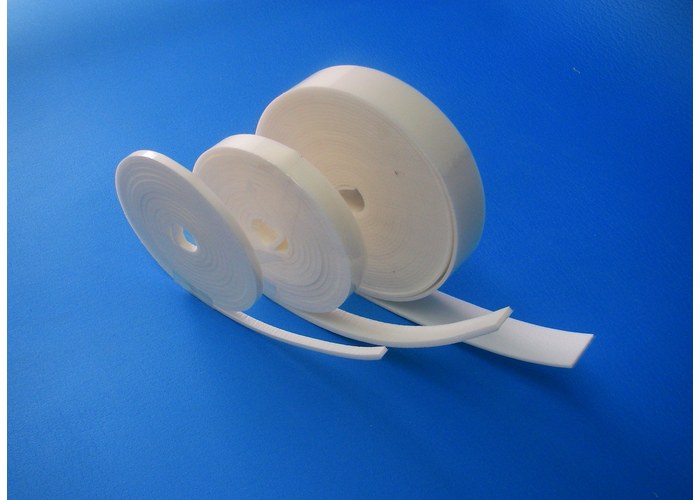
Mounting beacons
Alignment of the bulk mixture without the use of special devices can not be performed. In addition, walking on the loose foundation will break the integrity of the coating, because the foot simply drowns and gets bogged down in the mixture.
To achieve the maximum level of the screed, you can only use beacons, which serve as U-shaped profiles, turned upside down and fixed on the floor surface. The gaps between the edges are covered with expanded clay, minimizing the contact of profiles with gypsum-fiber sheets.

Stacking of dry mixes
All used bulk materials should be distinguished, first of all, by a uniform composition. Ideally suitable slag fine-grained and expanded clay, quartz or silica sand, specialized dry mixtures, for example, Knauf. These components have high sound and heat insulation characteristics and low weight, practically do not give shrinkage.
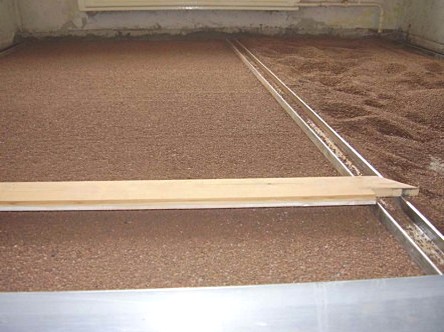
The amount of mixture that you need to work depends on the unevenness of the floor. In addition, you should hide the necessary communications in the backfill, which means that the thickness of the screed reaches 3-4 cm.
Laying of sheet material
As a sheet material, special prefabricated coverings, sheet metal or traditional particle board, gypsum-fiber sheets, asbestos-cement slabs or waterproof plywood.
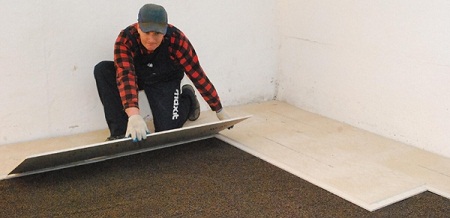
The sheets are alternately stacked and fixed to each other. An important and responsible moment is the laying of the first sheet: on how exactly it will be laid, the quality of the dry laying depends.
When laying the sheet material, do not press it firmly and do not move it over the surface.
The laying process should always start from the door, if heat insulation boards are used, the work is done in the opposite side from the door.
The type of sheet material, its dimensions determine the number of layers - whether it will be 1 layer or have to be stacked. 2. Using gypsum-fiber sheets, do not forget to make a fold. It will have to be performed absolutely for all sheets laid along the walls. This is necessary to create a double layer of gypsum-fiber sheets on the floor surface. Uncut groove can cause hitting of claydite into voids and gradual failure of sheets and floor.
Laying of sheet material is similar in technology with brickwork - with a slight displacement, due to which significantly increases the stability and strength of the floor.
Sheet fastening
After you have laid the sheets, they need to be fixed on the screws through the folds along the entire perimeter. Screw them to a depth of 10-15 cm, with additional strength of the construction attached to the construction adhesive.
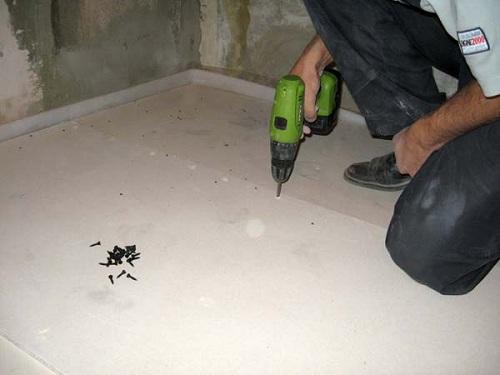
Formed seams and irregularities are carefully masked with putty and ground.
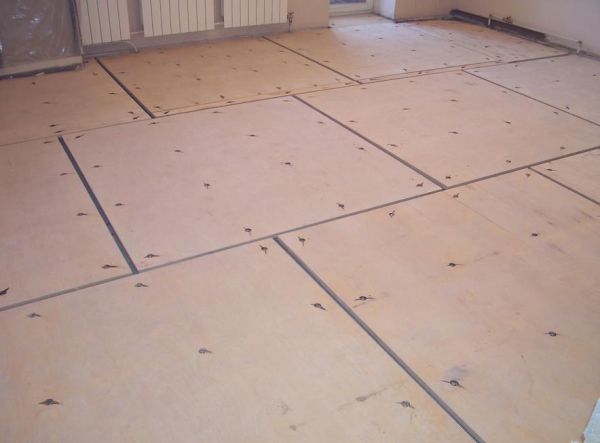
The surface of the sheets is covered with bitumen insulation. At this the creation of a dry screed is completed. You can proceed to the finish of the floor.
The technology of creating a dry screed you can clearly see in a small video on youtube.


